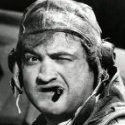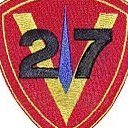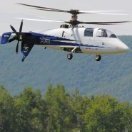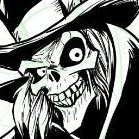-
Posts
129 -
Joined
-
Last visited
About Karl H
- Birthday 06/05/1957
Profile Information
-
Gender
Male
-
Location
Decatur IL
-
Interests
B-17s, 100th BG, 8th Air Force, Airfields and their buildings (in England), and lots of other stuff!
Recent Profile Visitors
1,478 profile views
-
 BiggTim reacted to a post in a topic:
1/32 B-17/B-24 aftermarket .50 small ammo can?
BiggTim reacted to a post in a topic:
1/32 B-17/B-24 aftermarket .50 small ammo can?
-
 Uncarina reacted to a post in a topic:
1/32 B-17/B-24 aftermarket .50 small ammo can?
Uncarina reacted to a post in a topic:
1/32 B-17/B-24 aftermarket .50 small ammo can?
-
 LSP_K2 reacted to a post in a topic:
1/32 B-17/B-24 aftermarket .50 small ammo can?
LSP_K2 reacted to a post in a topic:
1/32 B-17/B-24 aftermarket .50 small ammo can?
-
 thierry laurent reacted to a post in a topic:
1/32 B-17/B-24 aftermarket .50 small ammo can?
thierry laurent reacted to a post in a topic:
1/32 B-17/B-24 aftermarket .50 small ammo can?
-
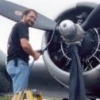
1/32 B-17/B-24 aftermarket .50 small ammo can?
Karl H replied to thierry laurent's topic in LSP Discussion
The ammo cans you are looking at are from different sources. The small one, which held 30 rounds was a standard military issue item. The larger one, seen on the B-17 waist guns, was a Boeing item and held 100 rounds. These cans were originally used before the advent of the flex chutes. Once those became more readily available, these fixed cans were eliminated. The metal cans were heavy and awkward and quickly fell out of favor. The larger one was specifically designed to be used for the B-17 waist gun, two were provided in a rack just forward of the gun. I have some photos and illustrations, just have to figure out how to post them ;)! EDIT: Okay, here we go. First illustration is from the B-17F Dash 1 showing the two ammo cans provided for the waist guns. There were two on each side. Next photo shows the two cans and the difference in size. Boeing engineering drawing showing their can. And finally, the military issue can. -
 theseeker reacted to a post in a topic:
HK B-25 interior colour
theseeker reacted to a post in a topic:
HK B-25 interior colour
-
 D.B. Andrus reacted to a post in a topic:
HK B-25 interior colour
D.B. Andrus reacted to a post in a topic:
HK B-25 interior colour
-
Starfighter Jock started following Karl H
-
 nmayhew reacted to a post in a topic:
B-25 "Bottoms Up II" paint job
nmayhew reacted to a post in a topic:
B-25 "Bottoms Up II" paint job
-
 Rick Griewski reacted to a post in a topic:
Hobby boss A26B “Intruder” —> Modeling News
Rick Griewski reacted to a post in a topic:
Hobby boss A26B “Intruder” —> Modeling News
-

Hobby boss A26B “Intruder” —> Modeling News
Karl H replied to Rick Griewski's topic in LSP Discussion
Must be the rarely reported on A-26 with the R-2600 engines. -

review REXx New Galvanically Grown Metal Exhaust Sets
Karl H replied to LSP_Kevin's topic in LSP Discussion
I realize this is the Large Scale Planes forum but may I ask if they plan on doing these for (gasp) 1/48th? -
"Miss Virginia" was on the mission that killed Yamamoto which has stirred up some controversy over the years. Unwarranted to my way of thinking. I presume that is what he is referring to.
-
 D.B. Andrus reacted to a post in a topic:
p-38 drop tank shakles
D.B. Andrus reacted to a post in a topic:
p-38 drop tank shakles
-
 D.B. Andrus reacted to a post in a topic:
p-38 drop tank shakles
D.B. Andrus reacted to a post in a topic:
p-38 drop tank shakles
-
Yes, the gun camera is only on the left pylon and that is only on later models. Earlier airplanes had the gun camera in the nose. I can't recall when it was changed, I am sure someone can come up with the exact details if needed. EDIT: The camera was in the pylon starting with S/N 44-23559.
-
This is a far better look at the installation. Again, the hoist supports (18 and 19 from the IPC illustration, normally folded in and covered by panel 6) are shown extended.
-
Here is the illustration from the IPC. The fairing (15) is removed when a drop tank or bomb is installed. The shackle is rigidly affixed and the lower portion of it is exposed when the fairing is removed.
-
Yes, but the shackle was exposed when the lower fairing was removed. And that was the question, can it be seen when the tanks have been dropped. Okay, got it to work. This show the pylon with the shackle exposed (lower fairing removed). So this is what it would look like after the bomb or drop tank had been dropped. It also shows the hoist supports for lifting a bomb into place, these obviously would not be exposed during operations. Sorry it's so dark, I will see if I can find my manual rather than this online version.
-
It did have a shackle. In the photo provided by Bigg Tim, it is covered by a fairing. This was used when the shackles were not. Have a photo from a manual but can't seem to post it. Looks like they have changed things yet again. When the lower faring was removed, the shackle was exposed. The upper part of the pylon is, as mentioned, a permanent installation.
-
Sorry I didn't get back to you. What I found interesting about these photos is that it appears the paint in the waist was added after equipment was installed. It looks like it goes around the ammo boxes, fuse box and other items. There are a number of photos of this particular incident out there. There are a few other photos which seem to show painted waists, some of which can be confirmed as Douglas. But others cannot. So was it something done locally? A gentleman who worked at the Douglas Long Beach factory swears they did not paint the interior. To help confuse the issue, a number of the surviving B-17's are Douglas built and some folks again swear that the airplanes came that way. But several of them were Navy/Coast Guard airplanes which would have been painted. It has been a frustrating subject and I really do not know the real answer. I don't think anyone has the absolute answer. I do think that any interior paint was not the "interior green" that is sold by model paint manufacturers. It was more likely tinted chromate like North American so widely used.
-
 Karl H reacted to a post in a topic:
1/48th Monogram B-24D
Karl H reacted to a post in a topic:
1/48th Monogram B-24D
-
While I am not a P-51 expert, I can see the IFF being removed. The black box is a large and heavy item. With the addition of the fuselage fuel tank it would make sense to get rid of it. When the fuel tank was added, the battery and the VHF radio were installed above it and there was no room for the IFF unit. Late Mustangs had the battery moved into the engine compartment and then the IFF unit could be installed in its place. I think there may have been some installations of it in the fuselage aft of the fuel tank but that would certainly play hell with the CG. But to answer the question: If the IFF was removed, then there would be no need for the controls. It would seem unlikely that the space was used for anything else. Perhaps someone will come up with some more definitive information. EDIT: Found this note in the P-51 maintenance manual. This is for the early D Mustangs and shows it was only installed when the fuselage fuel tank was not:
-
24 is the ammeter, 25 appears to be the Detrola control, 26 looks like the hole in the floor to see the fuel gauge. Not sure what 27 is pointing to although it looks like it is on the oxygen hose. As for the circled item, that is the control for the SCR 595/695 IFF. .
-
 Karl H reacted to a post in a topic:
Early B-25C/D Cheek Gun Installations
Karl H reacted to a post in a topic:
Early B-25C/D Cheek Gun Installations
-
Great information, can't wait for Part 2! Paul, can you give us some specifics on the dental resin?
-
 Karl H reacted to a post in a topic:
Building Revell - Monogram 1/48 A-26 Invader ...
Karl H reacted to a post in a topic:
Building Revell - Monogram 1/48 A-26 Invader ...
-
Per the Maintenance manual, the cockpit was Dull Dark Green while the rest of the interior was tinted Chromate (they refer to it as Yellow-Green). You can take the Yellow Chromate from Testors and tint it with a little black until you get an olive color. And as previously mentioned, the bomb bay was unpainted. Here is a photo of the waist of an unrestored B-25. The chromate bits are from where the structure for the life raft was removed. Here are a couple more pictures of unrestored interior bits. There are variations that can be caused by the way the paint was mixed as well as the age and environmental factors. The main thing is it is not the bright interior green that is often found in models:
-
That is why I never saw any need for cowlings in an E conversion set. I know some say they can see a difference in the profile, but I can't. And I sure as heck see the difference in the profile of the HK nose. To each his own, it IS just a hobby ! What is really need for a good E conversion is the SPERRY (not Bendix) remote turret along with the appropriate sighting blister and scanning windows.


